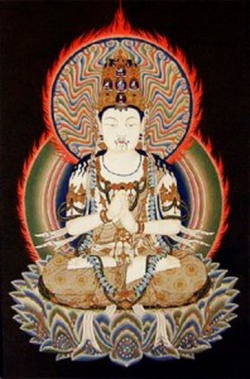Shingon Buddhism
We follows the path of the Shingon School, particularly in the Koyasan tradition, and our lineage belongs to the Chuin-ryu lineage.
Shingon Esoteric Buddhism is an ancient form of Vajrayana that was estabilshed by the monk Kūkai (also known posthumously as Kōbō Daishi in Japan) in the 9th century, during the beginning of the Heian Period. Kūkai transmitted the esoteric dharma to Japan through Tang Dynasty China.
Shingon is the representation of the middle period development of Vajrayana (or Esoteric Buddhism) in India, centuries before the foundation and emergence of the Tibetan Vajrayana tradition. The teachings of Shingon are based on the Mahavairocana Sutra and the Vajrasekhara Sutra, recorded and written around the last half of the 7th century. Each of these sutras teach the fundamental way in being able to bring our body, speech and mind and unite them in full to become Buddhas within our own body.
The praxis of discipline within the Shingon Buddhist tradition teaches an expedient way of finding Buddha-nature within while eliminating the human desires we have within ourselves Exoteric teachings also do the same, but it can be impossible to cleanse one’s entire body of these inner cravings completely. Shingon emphasizes the practitioner to seek their own mind through the cultivation of one’s body, speech, and mind, uniting that with the Buddha’s own body, speech and mind.
To go forward by practicing this teaching is to experience awakening, and be one with Universal Life; this is personified as Mahavairocana, the great sun Tathagata.
